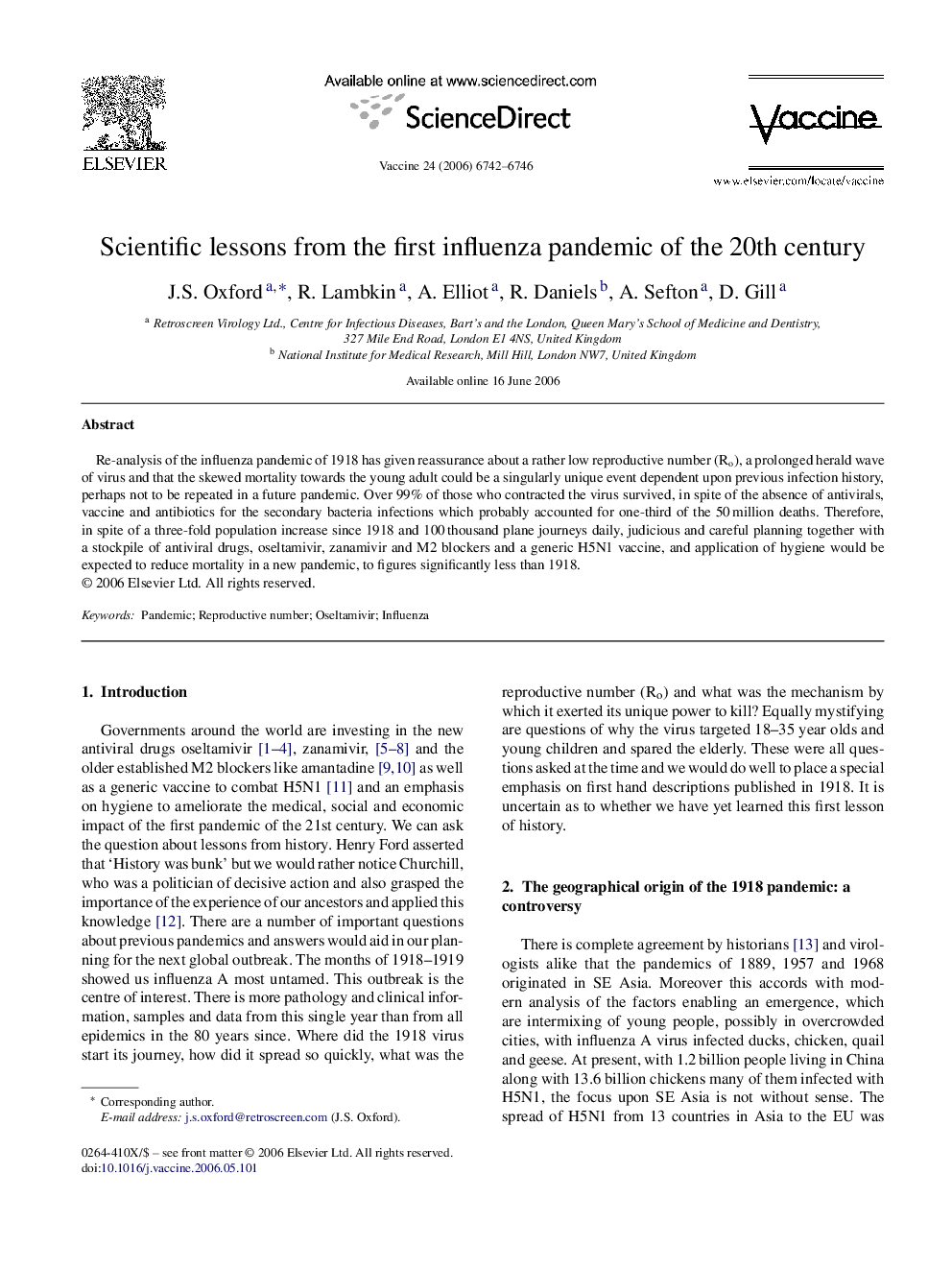| کد مقاله | کد نشریه | سال انتشار | مقاله انگلیسی | نسخه تمام متن |
|---|---|---|---|---|
| 2408684 | 1551787 | 2006 | 5 صفحه PDF | دانلود رایگان |

Re-analysis of the influenza pandemic of 1918 has given reassurance about a rather low reproductive number (Ro), a prolonged herald wave of virus and that the skewed mortality towards the young adult could be a singularly unique event dependent upon previous infection history, perhaps not to be repeated in a future pandemic. Over 99% of those who contracted the virus survived, in spite of the absence of antivirals, vaccine and antibiotics for the secondary bacteria infections which probably accounted for one-third of the 50 million deaths. Therefore, in spite of a three-fold population increase since 1918 and 100 thousand plane journeys daily, judicious and careful planning together with a stockpile of antiviral drugs, oseltamivir, zanamivir and M2 blockers and a generic H5N1 vaccine, and application of hygiene would be expected to reduce mortality in a new pandemic, to figures significantly less than 1918.
Journal: Vaccine - Volume 24, Issues 44–46, 10 November 2006, Pages 6742–6746